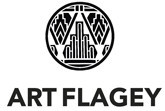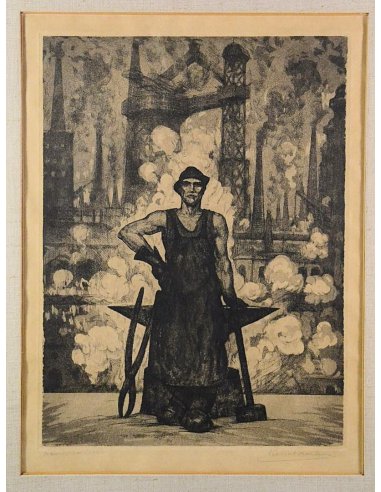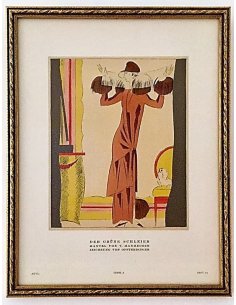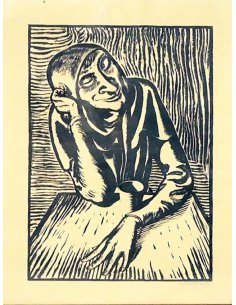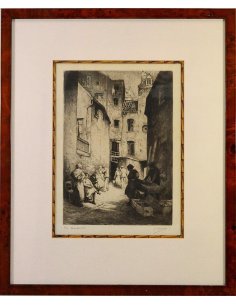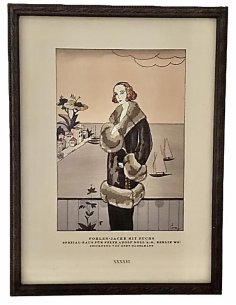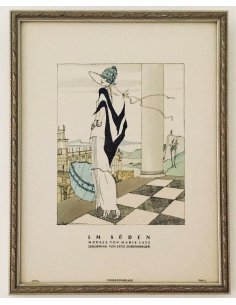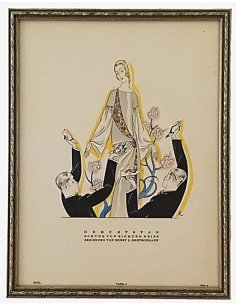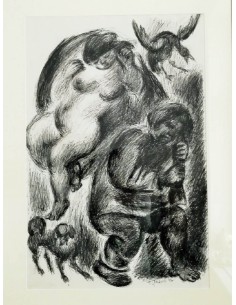Pierre Paulus (1932) Original etching "Hainaut"
The striking etching "Hainaut" by Pierre Paulus, dated 1932, depicts a sturdy industrial worker at the center of a smoking steelworks.
The monumental figure, wearing an apron and holding a hammer and pliers, represents the working class of the Walloon industrial region of Hainaut (French: Hainaut) in Belgium. In the background, chimneys, towers, and machine buildings rise up – enveloped in steaming clouds of smoke that convey the energy and harshness of industrialization.
With expressiveness and rich detail, Paulus places the human being at the center of a modern, demanding working world.
Original graphics like this are available from ART FLAGEY, your Berlin art dealer for collectors of Belgian art.
About the artist:
Pierre PAULUS (1881-1959)
Baron Pierre Paulus de Châtelet, known as Pierre Paulus, was a Belgian painter, graphic artist, and politically active artist. Born in 1881 in Châtelet (Hainaut), he became a key figure in Belgian Expressionism and a symbol of the Walloon movement. He became known in 1911 through the "Art of Wallonia" exhibition and, above all, through his design of the red "Walloon Rooster" (le coq hardi), which later became the symbol of the Walloon region.
Paulus's art focused on the lives of the working class, the industrial landscape of his homeland, and social issues. His works—often dark, raw, and full of energy—reflect both the pride and hardship of work. A committed regionalist and critic of social inequality, he combined art and politics like few of his contemporaries.
